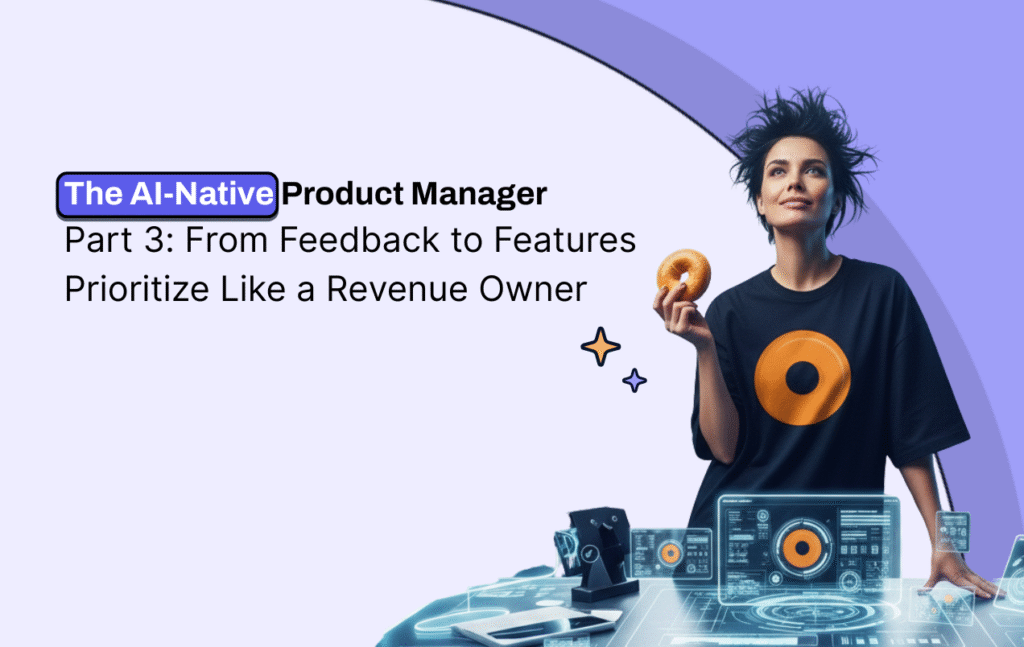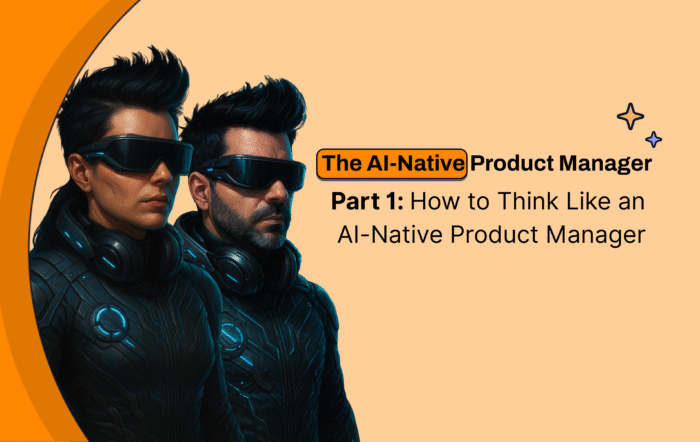Why Feedback Feels Broken
It’s Monday morning. Sales is frustrated about losing another deal. CS is warning that renewals are at risk. Slack is filling with requests, Jira with tickets, and leadership is sending one-off asks. The feedback is there, but it is:
- Scattered across tools like: Salesforce, Gong, Zendesk, Slack, and Jira
- Stripped of account or revenue context
- Emotional and urgent, but not tied to actual business impact
So the roadmap drifts toward:
- What was loudest
- What leadership mentioned
- What got logged last
The outcome: 80 percent of features are rarely or never used. That’s wasted engineering time and wasted customer patience.
From Anecdotes to Decisions That Count
Take a feature like “role-based permissions.” At first glance it’s just another repeated request. But when you add context:
- Gong transcripts show it blocked two six-figure deals
- Support logs highlight it as a recurring confusion point in mid-market renewals
- Sales notes connect it directly to a competitor win
The conversation changes. You are no longer debating its importance. You are calculating how quickly it can get specced and prioritized.
The lesson: the job isn’t to collect feedback. It’s to link pain to payoff.
The Questions That Change the Output
AI is only as useful as the question you give it. Instead of asking for themes in general, start with business-framed prompts like:
- “What are the top feature blockers in deals that didn’t close?”
- “Which pain points are common in churned customers compared to retained ones?”
- “What are the most cited obstacles in expansion opportunities over $100K?”
That framing forces the analysis to focus on revenue signals, not just noise.
Building Context Around the Data
Once you know what you’re looking for, you need the right inputs. The most valuable sources are:
- Sales notes and Gong calls – capture lost deal blockers and objections
- Support tickets – sort by account tier to separate enterprise risk from SMB noise
- Tagged product feedback – highlight churn or expansion risk where relevant
Then ask the AI to cluster by consequence, not just content:
- “Group these into themes and flag which ones are tied to high ARR, expansion opportunities, or churn drivers.”
Now you’re not just seeing “permissions” or “mobile app.” You’re seeing “permissions = $200K blocked pipeline.”
Shifting to Commercial Scoring
Every feature idea should move from “users want this” to “this request impacts revenue in measurable ways.” Examples:
- “10 percent of enterprise customers raised this during onboarding”
- “This feature was a common blocker in three deals worth $400K”
AI can handle the tagging, matching, and structuring. You handle the framing.
A Week in Practice
Think of this as a rhythm, not a rigid checklist:
- Monday – Feedback scan: Let AI surface what changed or spiked.
- Tuesday – Cluster by value: Filter by ARR, stage, or CSAT.
- Wednesday – Cross-functional review: Pressure-test assumptions with Sales and CS.
- Thursday – Build the narrative: Tie themes to OKRs and business outcomes.
- Friday – Close the loop: Push updates into GTM tools so Sales and CS know what’s coming and why.
This cadence builds trust across teams. It also avoids the “alignment theater” where everyone debates without evidence.
Common Ways to Get It Wrong
- Treating all feedback equally: Volume ≠ value. Always tie feedback to customer or business impact.
- Asking AI vague questions: Without framing, AI can’t know what your business values.
- Jumping to solutions too fast: Sometimes a feature request is actually a UX gap, a workflow issue, or even training.
How Bagel Fits Into This Flow
Bagel was designed to solve this “messy middle.” It connects directly to the tools where feedback already lives: Salesforce, Zendesk, Gong, Slack, and Jira.
With Bagel, product managers can:
- Ingest feedback automatically from multiple GTM sources
- Cluster it into themes annotated by account tier, stage, and ARR
- Click into a feature request and see which customers raised it, the deal values tied to it, and the original quotes from Gong or CS notes
- Convert those themes into Bagel Feature Ideas with revenue impact, PM notes, and linked Jira tickets for full traceability
- Push updates back into Slack or Salesforce so GTM teams see what’s planned and why
This turns passive signals into active, auditable insight.
Why This Matters Now
Bagel is not trying to make prioritization automatic. It is making it auditable. You walk into an exec meeting with evidence, not just opinions.
That matters because misalignment between product and GTM costs companies $150 billion every year. Bagel’s AI doesn’t replace PM judgment. It makes sure that judgment is grounded in quantified business outcomes.
The Bottom Line
Try this test with one feature you shipped recently:
- What’s the dollar value of the customers who requested it?
- Did the request come more often from Sales, Support, or Success?
- Could you defend the choice in front of a CFO?
If you cannot answer those three, this workflow is designed to close that gap. AI won’t hand you a roadmap. But it will:
- Surface opportunities hiding in the noise
- Justify roadmap choices with business evidence
- Make collaboration with GTM smoother and faster
That is how you stop building on vibes and start building with evidence.
Continue the Series
Catch up on previous posts:
- Post 1: You’re Not Using AI – AI Is Using You
- Post 2: Your AI Workflow Starter Pack (No Tools, Just Tactics)
Coming next:


